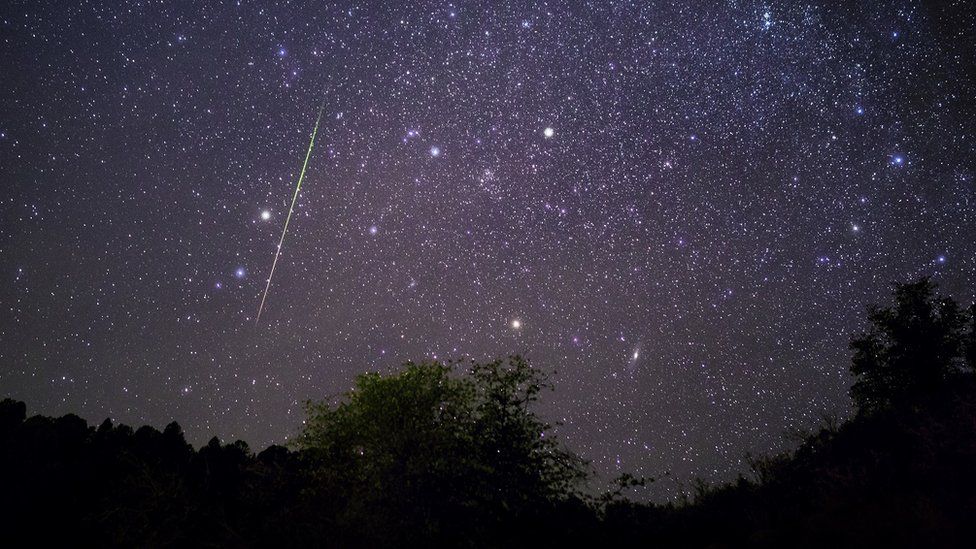Those in the south and west will have the best chance of catching a glimpse, with clearer skies forecast.
 Image source, Getty Images
Image source, Getty ImagesThe Leonid meteor shower is set to light up the night’s sky in the early hours of Friday.
Those living in the south and west of the UK will have the best chance of catching a glimpse of the shooting stars, with clearer skies forecast.
However, cloudy and rainy conditions across northern areas mean a sighting of the annual event is unlikely.
The best time to spot the Leonids, one of the more prolific annual meteor showers, will be from midnight to dawn.
The Leonids are normally fast and bright. The flashes of light are created when fragments of Comet Tempel-Tuttle – known as meteoroids when they are in Space – enter the Earth’s atmosphere at over 45 miles (72km) per second and create friction in the air, causing them to burn up and leave a bright momentary streak across the sky.
Each year the Earth passes through the debris left behind by Tempel-Tuttle and as a result we get the Leonids. In turn they got their names because they appear to stream from the head of the constellation Leo, the Latin word for lion.
Where can I see the Leonids?
You’ll need clear skies to see the meteors and they won’t just be visible in the UK, but across much of the northern hemisphere.
They’ll also be visible across all parts of the sky, so wide open spaces without light pollution will give you the best chance of catching a glimpse.
The Moon will only be 35% illuminated overnight into Friday, meaning it won’t be too bright and so it’ll be easier to spot any shooting stars.
Don’t worry if you don’t manage to see them in the early hours of Friday. Although this is when they’re at their best, they can be spotted from 6 to 30 November.
Will I need specialist equipment?
No. The display will be visible to the naked eye.
What’s special about the Leonids?
Every 33 years Tempel-Tuttle comes as close as it will to Earth when it returns to the inner solar system – the eight planets including our own and the asteroid belt.
“As it approaches the Sun it begins to heat up, releasing dust and gases from its surface,” explains Jake Foster, an astronomer at the Royal Observatory Greenwich.
“This replenishes the comet’s path with a fresh supply of debris, leading to intense meteor storms with a greater hourly rate of shooting stars than usual.
“Since Comet Tempel-Tuttle won’t return to the inner solar system until 2031, no meteor storm is to be expected tonight.”
In 1833, the Leonid meteor storm reported a peak of 100,000 shooting stars per hour.
Friday will see a more normal shower.